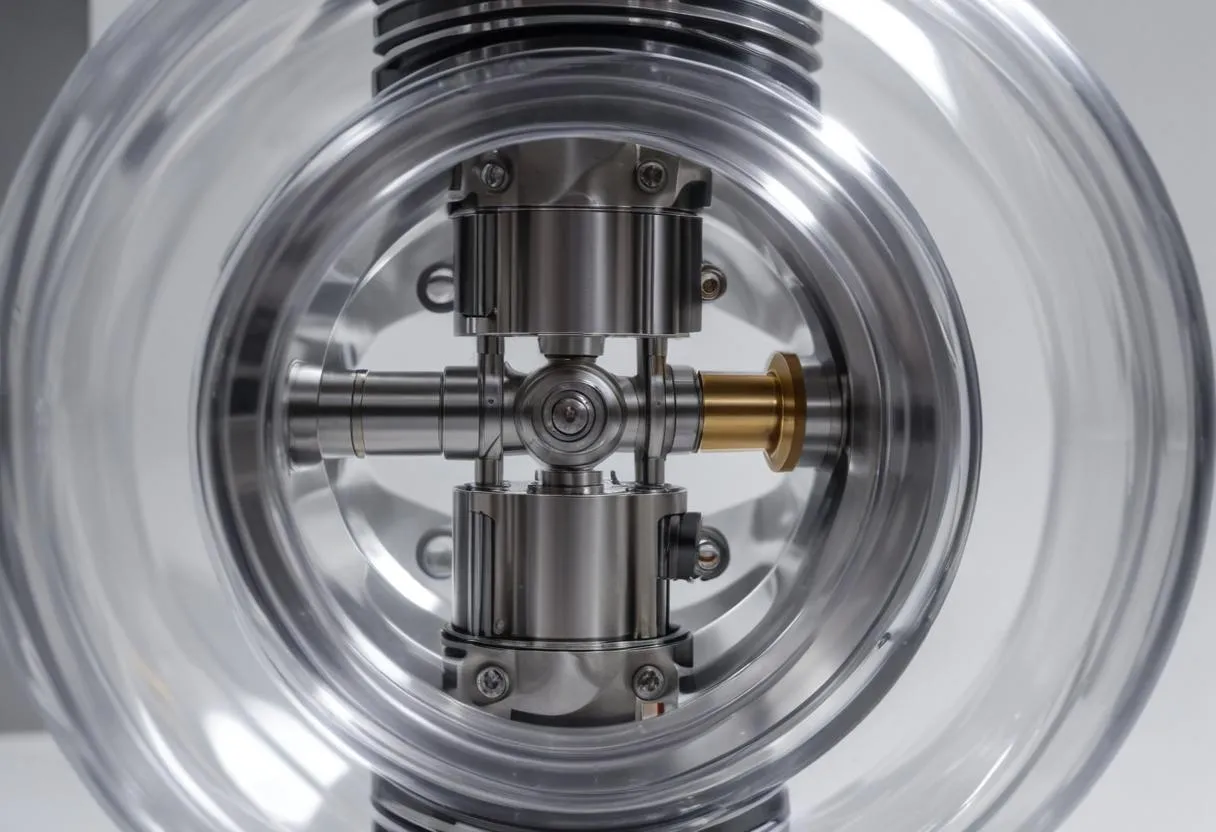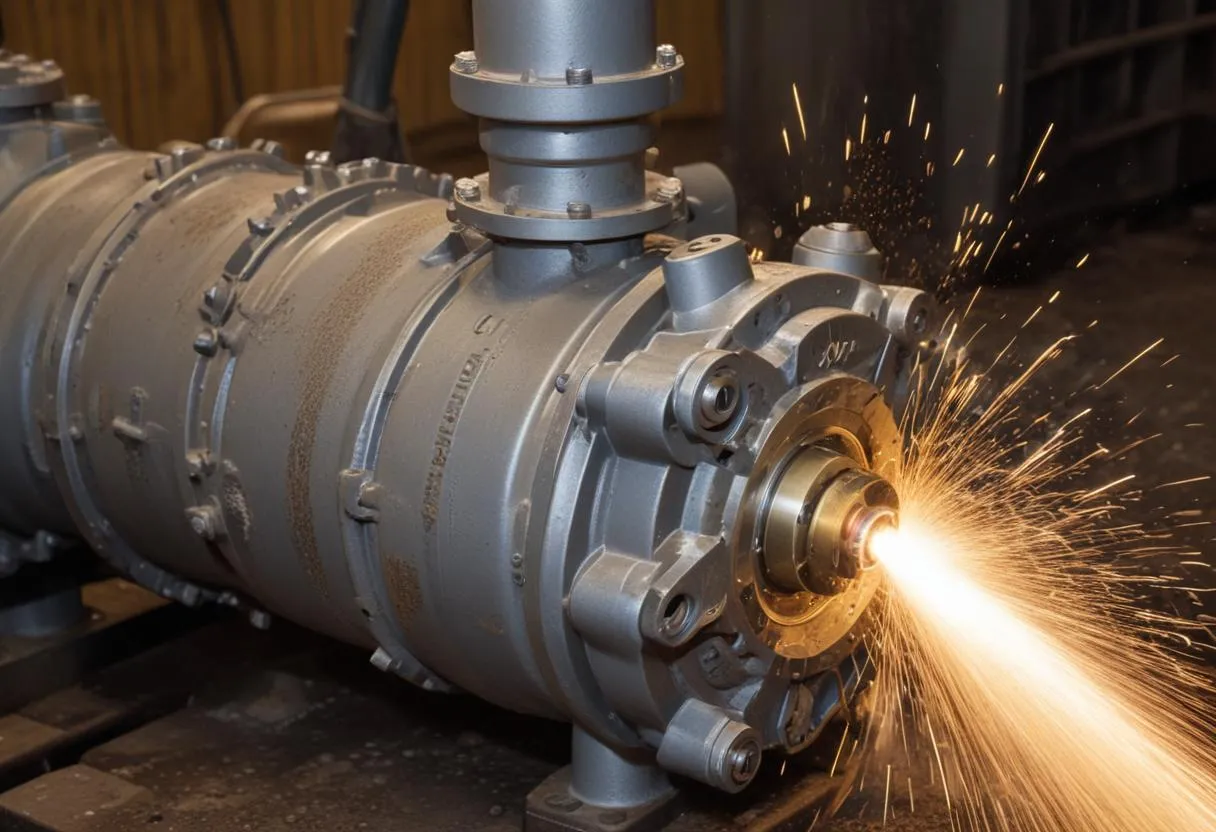 Positive displacement pumps, which include both reciprocating and rotary types, operate under a similar basic principle but differ significantly in their mechanics. These pumps create flow by mechanically trapping a fixed amount of fluid then forcing (displacing) that trapped volume into the discharge pipe.
Positive displacement pumps, which include both reciprocating and rotary types, operate under a similar basic principle but differ significantly in their mechanics. These pumps create flow by mechanically trapping a fixed amount of fluid then forcing (displacing) that trapped volume into the discharge pipe.
Reciprocating positive displacement pumps function by a back-and-forth (reciprocating) motion of a piston inside a cylinder. As the piston moves within the cylinder, it creates varying volumes that periodically draw in and expel fluid. Key components include the piston, cylinder, and valves which control the direction of the fluid flow. Here is a simplified breakdown of the working mechanism:
- The suction phase: As the piston retracts, it creates a vacuum that opens the inlet valve and draws fluid into the cylinder.
- The discharge phase: As the piston pushes forward, the inlet valve closes, the pressure builds, forcing the outlet valve open and the fluid is then pushed out of the cylinder.
On the other hand, rotary positive displacement pumps involve the rotation of gears, lobes, or screws to transport fluid. Unlike reciprocating pumps, rotary pumps offer a continuous flow rather than a pulsating flow. The basic operation involves a set of rotating elements like gears or lobes that create a vacuum at the pump inlet to draw in fluid. The fluid moves between the teeth of the gears or the lobes, trapped as the elements rotate, and is finally expelled at the outlet. This can be structured as follows:
- The intake phase: Fluid enters the pump and gets trapped between the rotating elements.
- The transport phase: As the elements continue to rotate, the trapped fluid moves with them along the casing of the pump.
- The expulsion phase: The fluid is forced out as the volume between the rotating elements decreases with the continuation of rotation.
Each of these mechanisms has several variants, tailored to particular applications and fluid characteristics. For example, gear pumps, a type of rotary pump, utilize two meshing gears while a diaphragm pump, a variation of reciprocating pumps, uses a diaphragm instead of a piston, minimizing leak paths and suitable for hazardous fluids.
The selection between these two general types of pumps often depends on the specific requirements of flow rate, pressure, fluid properties, and desired pump efficiency. The core difference lies in the motion – reciprocating for direct and robust displacement versus rotary for smoother, continuous flow. Understanding these mechanics carefully helps in making an informed choice about the right type of pump for any specific application.
Advantages and disadvantages
In evaluating the advantages and disadvantages of reciprocating and rotary positive displacement pumps, several key factors come into play which dictate their suitability for various applications.
Reciprocating Pumps:
Advantages:
- High Efficiency: They offer very high efficiency, especially in high-pressure applications.
- Strong Performance: Capable of handling a wide range of fluid viscosities and pressures.
- Accuracy: Provides precise flow control which is critical in applications like dosing and metering.
Disadvantages:
- Vibration and Noise: Their operation can be relatively noisy and causes vibrations due to the reciprocating motion, which sometimes requires additional installation considerations to mitigate.
- Maintenance Needs: More moving parts (like valves and pistons) can result in higher maintenance requirements.
- Pulsating Flow: The flow is not as smooth as with rotary pumps, which can be a drawback in certain applications that require a steadier stream.
Rotary Pumps:
Advantages:
- Smooth Operation: These pumps offer a smooth and continuous flow, eliminating issues related to pulsation.
- Compact Design: Generally, rotary pumps have a more compact and space-saving design.
- Lower Maintenance: With fewer moving parts compared to reciprocating pumps, the maintenance needs are generally lower.
Disadvantages:
- Efficiency Concerns: They may not match the efficiency of reciprocating pumps in high-pressure scenarios.
- Sensitivity to Fluid Contaminants: Rotary pumps are often more sensitive to fluid contaminants, which can cause wear and tear on the rotating mechanisms.
- Higher Shear: These types of pumps can impart higher shear forces, which might not be suitable for shear-sensitive fluids like latex or certain food products.
A summary table that contrasts these key points can help clarify their distinct features:
| Reciprocating Pumps | Rotary Pumps | |
|---|---|---|
| Efficiency | Higher in high-pressure scenarios | Lower in high-pressure scenarios |
| Operational Noise and Vibration | Higher | Lower |
| Maintenance Needs | Higher due to more moving parts | Lower due to fewer moving parts |
| Flow Characteristics | Pulsating | Continuous and smooth |
| Sensitivity to Fluid Contaminants | Less sensitive | More sensitive |
These characteristics generally guide the selection process based not only on the operational environment but also on the specific needs dictated by the nature of the fluids being handled and desired outcomes.
Application scenarios and selection criteria
 When selecting a pump for specific application scenarios, it’s crucial to consider the fluid characteristics, required flow rate, and operational pressure of the system along with the pump’s advantages and disadvantages as noted previously. Below are key criteria and outlines for selecting between reciprocating and rotary positive displacement pumps, tailored for specific conditions.
When selecting a pump for specific application scenarios, it’s crucial to consider the fluid characteristics, required flow rate, and operational pressure of the system along with the pump’s advantages and disadvantages as noted previously. Below are key criteria and outlines for selecting between reciprocating and rotary positive displacement pumps, tailored for specific conditions.
- Fluid Type: The nature of the fluid—whether it is corrosive, abrasive, or contains large particulates—crucially influences pump selection. Reciprocating pumps are particularly resistant to abrasive or corrosive damage due to their robust construction, making them suitable for tough fluids. Rotary pumps, although effective with clean, low-viscosity fluids, are less optimal for abrasive or particulate-laden fluids due to the potential for increased wear on rotating parts.
- Viscosity: High viscosity fluids often require a pump that can exert greater force on the fluid, a strength of reciprocating pumps. Rotary pumps are generally selected for lower viscosity fluids due to their ability to provide a smooth, continuous flow.
- Pressure Requirements: For high-pressure applications, such as hydraulic systems, the superior pressure capabilities of reciprocating pumps make them the more feasible choice. Rotary pumps may not perform as effectively under such high-pressure demands.
- Flow Rate: Rotary pumps are usually more adept at handling higher flow rates compared to reciprocating pumps due to their continuous output, making them well-suited for applications requiring steady fluid delivery over larger volumes.
Application Examples:
| Application | Preferred Pump Type | Reason |
|---|---|---|
| Oil and Gas Production | Reciprocating | Handles varying viscosities and high pressures. |
| Water Treatment | Rotary | Efficient continuous flow ideal for moving large volumes of water. |
| Chemical Dosing | Reciprocating | Precise control of pumped fluid volume. |
| Food and Beverage | Rotary | Gentle handling of shear-sensitive fluids like chocolate. |
To ensure optimal pump performance and longevity, various factors like maintenance schedules, installation environment, and operational cost should also be weighed. Reciprocating pumps, due to their complexity and motion, might require more frequent maintenance than rotary pumps. Meanwhile, the simpler mechanism of rotary pumps typically results in a lower overall maintenance burden but may involve more specialized procedures like regular clearance adjustments for rotary elements, particularly in high-precision industries such as pharmaceutical processing.
In conclusion, the criteria for selecting the appropriate pump often boil down to specifying the duty (conditions under which the pump will operate) and utility (desired function and operation within the system) to match the right pump type with the right application, thereby minimizing the operational challenges and maximizing efficiency and service life. Through careful consideration of these application-based criteria and selection guidelines, engineers and operators can effectively tailor their pump choices to meet nuanced operational demands.